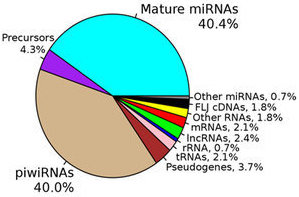The potential of extracellular vesicle (EV) RNA as biomarkers of disease is increasingly being recognized. Circulating extracellular RNAs can potentially indicate the presence of disease without the need for an invasive biopsy of diseased tissue. A recent study by Yuan et al (Scientific Reports, Jan 2016) performed a systematic analysis of circulating exRNA in plasma obtained from 50 healthy individuals and 142 cancer patients. The authors conducted the largest RNA sequencing study reported to date for profiling circulating extracellular RNA (exRNA) species in order to provide useful insights into their baseline expression level. High-throughput multivariate statistical analysis identified a set of RNA candidates that were associated with age, sex, and cancer type.
The study directly addressed a major challenge in the field of exRNA, namely the lack of a baseline reference to accurately determine RNA abundance. Currently qRT-PCR is the most common method used to quantitate gene expression, but it relies on well-established reference controls for normalization. However, information on reference controls has not been established for exRNA. Control RNAs used for normalization in qRT-PCR experiments of cellular RNA cannot be reliably used for exRNA. Exogenous spike-in RNAs such as those derived from species like C. elegans cannot be used to normalize across biological or pathological states. Here the authors surveyed a pool of almost 200 exRNA profiles to identify a few potential reference candidates for exRNA quantification. Most candidate were miRNAs like miR-99a-5p. The study also provided convincing evidence for the presence in plasma of species of RNA other than miRNA, such as piwiRNA (see figure).
The dataset generated by this study is available in the exRNA Atlas for other researchers to explore. Future studies will be needed to validate these findings; however, with the current study we have taken a big leap towards the goal of determining the biomarker potential of exRNA for human diseases.

RNA species detected in the plasma of 142 cancer patients and 50 healthy controls
Source: Scientific Reports / CC BY 4.0
There are no comments.